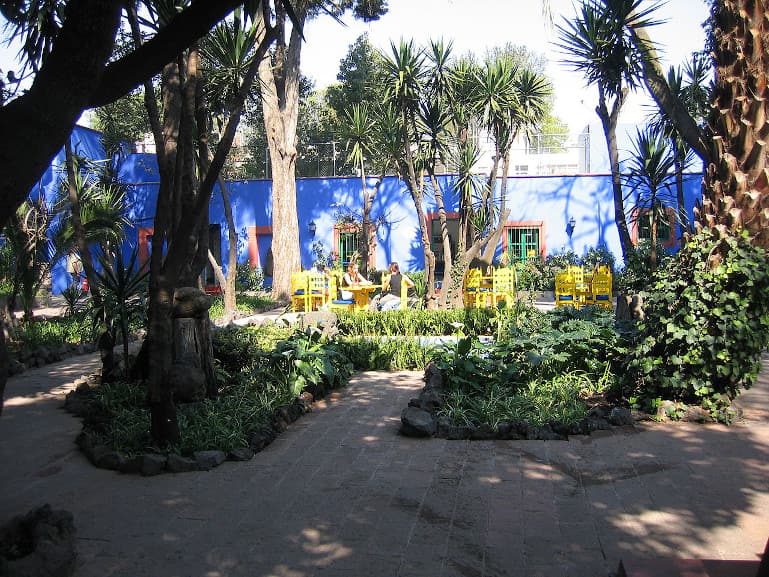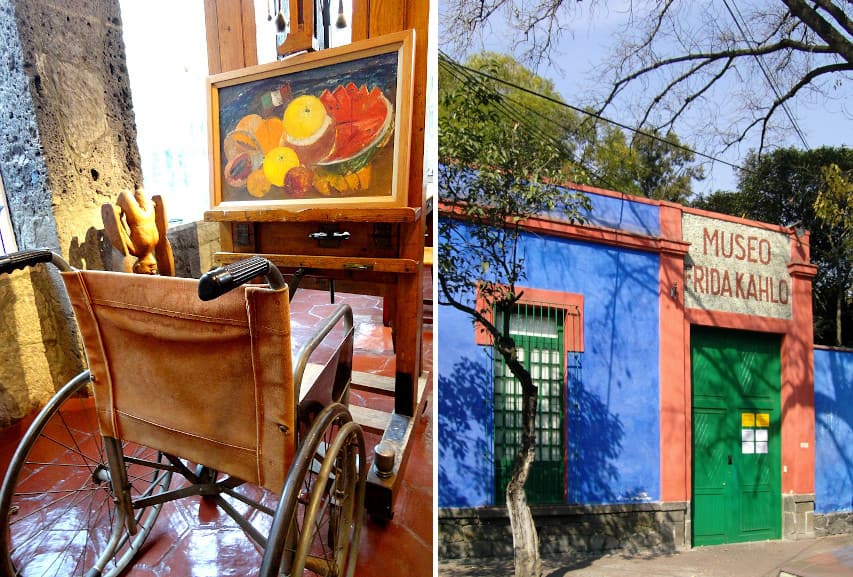Casa Azul - A Pilgrimage That Still Maintains the Essence of Frida Kahlo
The house in which a particular artist lived can tell us much about hers or his personality, daily routine, and habits that have been kept under the public radar. Therefore, the practice of transforming the artist's house into a museum is not unusual. One of those captivating places is Frida Kahlo's Casa Azul, also known as the Blue House.
This astounding structure, built at the beginning of the 20th century, is located in the Colonia del Carmen neighborhood of Coyoacán in Mexico City and is known for its signature cobalt-blue walls. Since 1958, the Blue House has operated as the Frida Kahlo Museum. The home of Kahlo and her partner and another epic artist, Diego Rivera, was the epicenter of intellectual and avant-garde activity, where both local and international figures used to gather and exchange ideas. Today, it attracts an enormous number of visitors every month and is one of the most visited cultural institutions in the city.

Casa Azul - A Little Piece of History
The house was erected in 1904 on the lands that belonged to the former Hacienda del Carmen property. At that time, the Coyoacán neighborhood was part of the Federal District of Mexico City but was very much rural and separate from Mexico City's urban life. Throughout the 1920s, Colonia del Carmen became populated by artists and intellectuals after the journalist Francisco Sosa promoted it.
Frida Kahlo was born in this house in 1907, which remained her family home throughout her life. She met Diego Rivera while he was producing murals at the Secretaria de Educacion Publica building and summoned him to the Casa Azul to take a look at her work. Rivera soon started frequenting the house regularly, as well as other notable artists at the time. In that way, the house became one of the area's meeting points. After marrying Rivera, Kahlo moved away, but he paid off the family's mortgage to secure her family home would remain in her possession.

The Collection Inside The Blue House
According to the archives, the house hasn't changed much since 1951. Frida Kahlo's museum consists of ten rooms. Some of the artist's mostly minor works, such as Frida y la cesárea (1907–1954), Retrato de Familia (1934), Ruina (1947), Retrato de Guillermo Kahlo (1952), El marxismo dará salud (1954), are displayed in the ground floor room.
The other two rooms are populated by personal items and a few of Rivera's works. One is filled with Frida's objects such as photographs, letters, notes, and pre-Hispanic necklaces and folk dresses. The second room includes the artist’s paintings Retrato de Carmen Portes Gil (1921), Ofrenda del día de muertos (1943), and Mujer con cuerpo de guitarra (1916). Yet another room contains the paintings by Paul Klee, José María Velasco, Joaquín Clausell, Celia Calderón Orozco, and a sculpture by Mardonio Magaña, while the fifth ground floor room contains two large Judas figures, Tlatilco figures, and Teotihuacan figurines.
The kitchen and dining room are both in classic 2 and are filled with large handcrafted earthenware pottery and other objects. Located next to the dining room, Rivera's bedroom features his jacket, hat, and work clothes.
The upper floor contains Frida's bedroom and studio. The original furniture, the artist's ashes, a funeral mask, some personal items, mirrors on the ceiling, a painted plaster corset she was forced to wear to support her damaged spine, and other objects span across the bedroom.
The large courtyard garden includes a stepped pyramid, a fountain, and a reflection pool. These structures were built in the 1940s when Rivera moved into the house. A couple of sculptures by Mexican artist Mardonio Magaña adorn the whole surrounding, as well as the inscription "Frida y Diego / vivieron en / Esta casa / 1929-1954" (Frida and Diego lived in this house – 1929-1954), found on one of the courtyard walls.

The Significance of Frida Kahlo's Casa Azul
The Mexican art power couple was very much into left ideology. They were great supporters of Vladimir Lenin and his government, including one of his closest peers, Leon Trotsky. After Lenin died, with the rise of Stalin, the political course of the Soviet Union changed significantly. Trotsky opposed the new ruler; he had to exile, eventually finding refuge in Mexico, where his wife and himself spent two years at Casa Azul in the late 1930s.
In 1939, Rivera and Kahlo divorced, but they remained in touch and eventually remarried in 1940. The following year, amid Frida's father's death, Rivera moved into the house. During this time, the artist constructed one of the wings and enclosed the courtyard. In 1943, Frida started teaching at the Escuela de Pintura y Escultura de La Esmeralda, but due to her poor health the artist had to give classes at the house. Around 1945, Frida was once again attached to the bed. Frida Kahlo died on the upper floor of this house in 1954 at the age of 47, and her wake took place there before the body was cremated at the Palacio de Bellas Artes.
Four years after her death, Rivera donated the house to the state and established a foundation for its preservation. The house was transformed into a museum dedicated to Frida Kahlo. Since the artist's work was not widely known, the Frida Kahlo Museum was relatively obscure, but that started changing throughout the 1980s when a movement called Neomexicanismo championed Kahlo and her work.
Eventually, she has become an iconic figure, with her images circulating through popular culture. For a brief while, the museum was closed in the early 1990s, then reopened with the addition of a gift shop and restaurant/café.
In the early 2000s, the prices of her works went up, and in 2006 the 1943 painting Roots was sold for US$5.6 million and gained an auction record for a Latin American work, not to mention the most recent sale of Kahlo's painting Diego y Yo (1949). The popularity of Frida affected the reputation of the museum, which became one of the most-frequented venues in Mexico City.
In 2009 and 2010, the building was restored with partial financial help from the German government. During that process, most of the paintings in the collection have been revitalized as well. Nowadays, the epic Caza Azul keeps a memory of the influential 20th-century Mexican artist whose outstanding heritage is carefully nurtured by the Frida Kahlo Museum.
Featured image: Tomb in the form of a pyramid, Frida Kahlo Museum Mexico City. Image via Creative Commons.
Can We Help?
Have a question or a technical issue? Want to learn more about our services to art dealers? Let us know and you'll hear from us within the next 24 hours.
